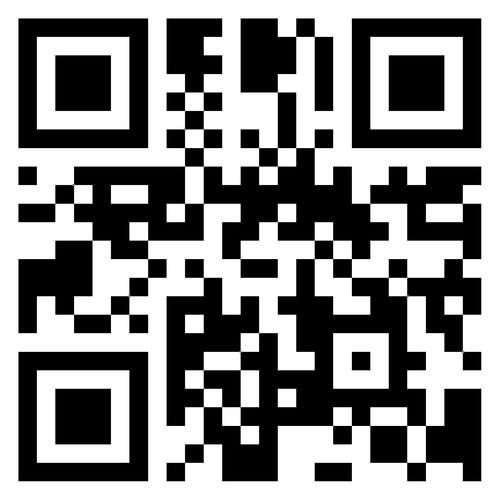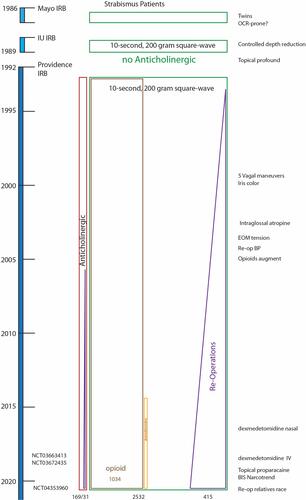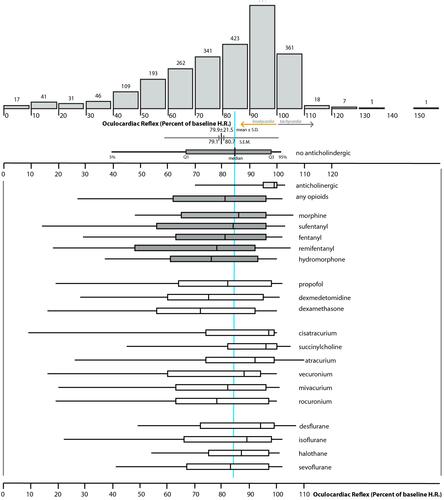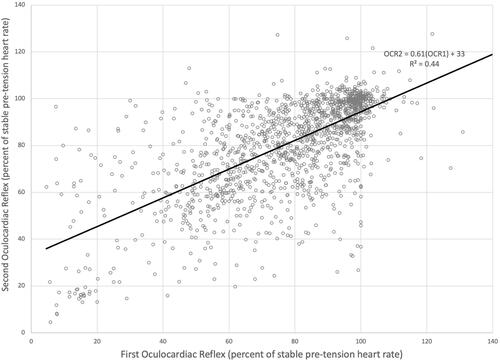Figures & data

Figure 1 Timeline of the Alaska OCR Study. Uniform elicitation of oculocardiac reflex (OCR) consistent with routine strabismus surgery has employed 10-second, 200-gram square wave tension on rectus extraocular muscles (EOM). Years are to the left and numbers of patients are listed at the bottom. The Alaska study mirrored two prior studies at Mayo Clinic and Indiana University. Publications and presentations of OCR data are listed to the right of the timeline.

Table 1 The Influence on the Oculocardiac Reflex by Various Anesthetic Parameters. Nonparametric Values Centered on the Median with First and Third Quartiles and the 5th and 95th Percentiles. The Mean and Standard Deviation (S.D.) are Given as Well as Proportion with More Than 20% Drop in Heart Rate (>20drop) and More Than 50% Drop in Heart Rate (>50drop). %OCR1 and %OCR2 are from the First and Second Extraocular Muscle During Each Strabismus Case Each Elicited by a 10-Second, 200 Gram Tension on a Gently Isolated Rectus Muscle. OCR is Expressed as the Maximal Percent Change from a Stable, Pre-Tension Heart Rate. Impacts are Grouped by Anticholinergic, Opioids, Propofol, Dexamethasone and Dexmedetomidine, Muscle Relaxants and Inhalational Agents
Figure 2 Frequency distribution of oculocardiac reflex showing anesthetic impacts. Oculocardiac reflex (OCR) defined as the maximally tension altered heart rate as a percent of stable, pre-tension baseline heart rate (H.R.). Uniform stimulus is 10-second, 200 gram tension on an extraocular rectus muscle. Impacts of various anesthetic agents indicated by box and whisker plots defining interquartile range, 95% range with bar to define median. S.D. is standard deviation and S.E.M. is standard deviation of the mean.

Figure 3 Linear correlation between first and second oculocardiac reflex (OCR). OCR is defined as the tension-modified heart rate as a percent of stable baseline elicited by uniform 10-second, 200 gram tension on an extraocular muscle in 1524 initial unique strabismus adult and pediatric patients with no anticholinergic.

Table 2 Linear Correlations Between Oculocardiac Reflex as a Percent of Baseline Heart Rate Compared to Exhaled Anesthesia Gas Concentrations. The Ordinate (y) is a Function of Constant a (with 95% Confidence Intervals), The Abscissa x Gas Concentration and a Constant b Percent Heart Rate with 95% Confidence Intervals. N is Number of Cases, the Pearson Product Correlation Value r and Probability p are Given. OCR1 is the Initial Oculocardiac Reflex and ∆OCR is the Difference Subtracting OCR1 from OCR2 in Two-Muscle Cases. CO2 is Carbon Dioxide and N2O is Nitrous Oxide
